The main reason scientists thought that proteins, rather than DNA, were the carriers of genetic material in the cell was:
- their ability to be exported from the cell.
- their presence within the nucleus.
- their abundance within the cell.
- their ability to self replicate within the cytoplasm.
- the large number of possible amino acid combinations.
The large number of possible amino acid combinations.
In the experiments of Griffith, the conversion of nonlethal R-strain bacteria to lethal S-strain bacteria:
- supported the case for proteins as the genetic material.
- was the result of genetic mutation.
- was an example of conjugation.
- could not be reproduced by other researchers.
- was an example of the genetic exchange known as transformation.
was an example of the genetic exchange known as transformation.
The first experimenters to use Griffith's transformation assay to identify the genetic material were:
- Hershey and Chase.
- Meselson and Stahl.
- Watson and Crick.
- Avery, MacLeod, and McCarty.
- Franklin and Wilkins.
Avery, MacLeod, and McCarty.
Which of the following statements about DNA is false?
- DNA is capable of forming many different sequences.
- DNA contains the sugar deoxyribose.
- DNA is double-stranded rather than single-stranded.
- DNA is only found in eukaryotic cells.
- DNA contains thyme instead of uracil.
DNA is only found in eukaryotic cells.
The bacteriophages used in Alfred Hershey's and Martha Chase's experiments showed that:
- DNA was injected into bacteria.
- proteins were responsible for the production of new viruses within the bacteria.
- proteins were injected into bacteria.
- DNA remained on the outer coat of bacteria.
- DNA and protein were injected into bacteria.
DNA was injected into bacteria.
The two molecules that alternate to form the backbone of a polynucleotide chain are:
- Base and phosphate.
- sugar and phosphate.
- cytosine and guanine.
- base and sugar.
- adenine and thymine.
Sugar and phosphate.
Chargaff determined that DNA from any source contains about the same amount of guanine as __________.
- thymine
- cytosine
- adenine
- guanine
- uracil
cytosine
__________ used x-ray diffraction to provide images of DNA.
- Crick and Wilkins
- Franklin and Crick
- Watson and Wilkins
- Franklin
- Watson and Crick
Franklin
X-ray diffraction studies are used to determine:
- the sequence of amino acids in protein molecules.
- the type of chemical under investigation.
- the distances between atoms of molecules.
- the sequence of nucleic acids in nucleic acid molecules.
- the wavelength of light emitted by chemicals.
the distances between atoms of molecules.
X-ray crystallography showed that DNA:
- had the bases in the center of the molecule.
- had the sugars and phosphates on the outside of the molecule.
- was a helix.
- was made of 2 strands.
- was a very long molecule.
was a helix.
_________ determined the structure of the molecule DNA.
- Franklin and Crick
- Crick and Wilkins
- Franklin
- Watson, Crick, and Wilkins
- Watson and Crick
Watson and Crick
The information carried by DNA is incorporated in a code specified by the:
- number of separate strands of DNA.
- phosphodiester 0bonds of the DNA strand.
- specific nucleotide sequence of the DNA molecule.
- number of bases in a DNA strand.
- size of a particular chromosome.
specific nucleotide sequence of the DNA molecule.
Why is DNA able to store large amounts of information?
- The nucleotides can be altered to form many different letters in the sequence.
- It is capable of assuming a wide variety of shapes.
- Its nucleotides can be arranged in a large number of possible sequences.
- It contains a large number of different nucleotides.
- The sugar and phosphates can be arranged in many different sequences.
Its nucleotides can be arranged in a large number of possible sequences.
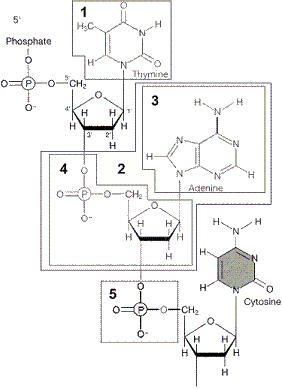
Figure 12-1 Use the figure to answer the corresponding question(s). The portion of the molecule in box 5 of Figure 12-1 is:
- a hydrogen bond.
- a nucleotide.
- a protein.
- a pyrimidine.
- a phosphate.
a phosphate.
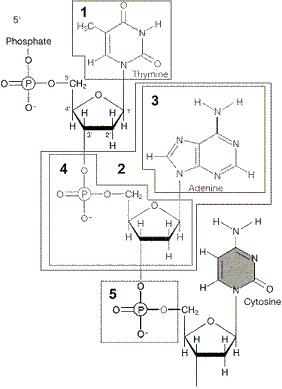
Figure 12-1 Use the figure to answer the corresponding question(s). In Figure 12-1, the portion of the molecule in box __________ is a pyrimidine.
- 1
- 1 and 3
- 3
- 4
- 3 and 4
1

Figure 12-1 Use the figure to answer the corresponding question(s). The portion of the molecule in box 3 of Figure 12-1 is:
- a purine.
- a protein.
- a nucleotide.
- a pyrimidine.
- a sugar.
a purine.
Hydrogen bonds can form between guanine and __________, and between adenine and __________.
- adenine; guanine
- phosphate; sugar
- cytosine; thymine
- sugar; phosphate
- thymine; cytosine
cytosine; thymine
Two chains of DNA must run in __________ direction(s) and must be __________ if they are to bond with each other.
- parallel; complementary
- parallel; uncomplementary
- opposite; uncomplementary
- the same; uncomplementary
- antiparallel; complementary
antiparallel; complementary
Which of the following nucleotide sequences represents the complement to the DNA strand 5¢ - AGATCCG- 3¢?
- 3¢ - AGATCCG- 5¢
- 5¢ - CTCGAAT- 3¢
- 5¢ - AGATCCG- 3¢
- 3¢ - TCTAGGC- 5¢
- 3¢ - CTCGAAT- 5¢
3¢ - TCTAGGC- 5¢
When DNA copies itself,
- the two strands stay intact as a double helix and the double helix serves as a template for a new double helix.
- the two strands separate and one of the two serves as a template.
- the two strands separate and both strands serve as templates.
- the DNA molecule completely hydrolyzes down to its individual nucleotides which then reorganize to form two new DNA molecules.
- nucleotides rearrange themselves adn pair together in all possible combinations.
the two strands separate and both strands serve as templates.
Which of the following best describes semiconservative replication?
- The translation of a DNA molecule into a complementary strand of RNA.
- A DNA molecule consists of one parental strand and one new strand.
- The replication of DNA takes place at a defined period in the cell cycle.
- The replication of DNA never takes place with 100% accuracy.
- The number of DNA molecules is doubled with every other replication.
A DNA molecule consists of one parental strand and one new strand.
The final product of DNA replication is:
- the enzymes needed for further processes, such as DNA polymerase.
- a wide variety of proteins.
- two DNA molecules, each of which contains one new and one old DNA strand.
- DNA fragments.
- mRNA, tRNA, and rRNA molecules.
two DNA molecules, each of which contains one new and one old DNA strand.
Who first confirmed that the replication of DNA was semiconservative?
- Watson and Crick
- Watson, Crick, and Wilkin
- Chargaff and Hershey
- Avery and Griffith
- Meselson and Stahl
Meselson and Stahl
If DNA replication rejoined the 2 parental strands, it would be termed:
- parental.
- semiconservative.
- conservative.
- gradient.
- dispersive.
conservative.
Meselson and Stahl separated DNA from different generations using:
- gel electrophoresis.
- density gradient centrifugation.
- None of these.
- an electron microscope.
- differential radioisotope labeling.
density gradient centrifugation
When a DNA molecule containing a wrong base at one location in one strand is replicated:
- the mutation is copied into one of the two daughter molecules.
- the mutation is ignored by the DNA polymerase enzyme.
- the mutation is corrected by the DNA polymerase enzyme.
- the mutation is copied into both of the daughter molecules.
- the replication is stopped.
the mutation is copied into one of the two daughter molecules.
Which of the following causes the unwinding of the DNA double helix?
- RNA polymerase
- DNA polymerase
- RNA primer
- DNA helicase
- primosome
DNA helicase
A replication fork:
- is a site where one DNA strand serves as a template, but the other strand is not replicated.
- is only seen in bacterial cells.
- is created by the action of the enzyme RNA polymerase.
- is only seen in prokaryotic chromosomes.
- is a Y-shaped structure where both DNA strands are replicated simultaneously.
is a Y-shaped structure where both DNA strands are replicated simultaneously.
In replication, once the DNA strands have been separated, reformation of the double helix is prevented by:
- DNA polymerases.
- GTP.
- DNA helicase enzyme.
- single-strand binding proteins.
- ATP.
single-strand binding proteins.
Enzymes called __________ form breaks in the DNA molecules to prevent the formation of knots in the DNA helix during replication.
- RNA polymerases
- single-strand binding proteins
- DNA ligases
- DNA polymerases
- topoisomerases
topoisomerases
What prevents knot formation in replicating DNA?
- scaffolding proteins
- histones
- topoisomerases
- protosomes
- chromatin
topoisomerases
Which of the following adds new nucleotides to a growing DNA chain?
- RNA polymerase
- primase
- DNA helicase
- RNA primer
- DNA polymerase
DNA polymerase
Why does DNA synthesis only proceed in the 5¢ to 3¢ direction?
- Because that is the direction in which the two strands of DNA unzip.
- Because the 3¢ end of the polynucleotide molecule is more electronegative than the 5¢ end.
- Because that is the only direction that the polymerase can be oriented.
- Because DNA polymerases can only add nucleotides to the 3¢ end of a polynucleotide strand.
- Because the chromosomes are always aligned in the 5¢ to 3¢ direction in the nucleus.
Because DNA polymerases can only add nucleotides to the 3¢ end of a polynucleotide strand.
The 5¢ end of each Okazaki fragment begins with:
- a DNA primer binding to the template DNA.
- the same RNA primer that began synthesis on the leading strand.
- a separate RNA primer.
- DNA polymerase binding to the template DNA.
- a small DNA primer.
a separate RNA primer.
DNA primase is the enzyme responsible for:
- unwinding the DNA double strand to allow DNA polymerase access to the template DNA.
- introducing nicks into the DNA double strand in order to prevent the formation of knots.
- hydrolyzing ATP to facilitate DNA unwinding.
- forming a replication fork in the DNA double helix.
- making short strands of RNA at the site of replication initiation.
making short strands of RNA at the site of replication initiation.
The DNA strand that is replicated smoothly and continuously is called the:
- alpha strand.
- first strand.
- primary strand.
- lagging strand.
- leading strand.
leading strand.
In DNA replication, the lagging strand:
- is not synthesized until the synthesis of the leading strand is completed.
- pairs with the leading strand by complementary base pairing.
- is synthesized as a complementary copy of the leading strand.
- is synthesized as a series of Okazaki fragments.
- is made up entirely of RNA primers.
is synthesized as a series of Okazaki fragments.
Okazaki fragments are joined together by:
- DNA polymerase.
- RNA polymerase.
- RNA ligase.
- DNA ligase.
- primase.
DNA ligase.
How is the chromosome of a bacterial cell replicated?
- The linear DNA molecule is replicated from one origin of replication bidirectionally.
- The circular DNA molecule is replicated from one origin of replication bidirectionally.
- The circular DNA molecule is replicated from one origin of replication unidirectionally.
- The linear DNA molecule is replicated from multiple origins of replication bidirectionally.
- The circular DNA molecule is replicated from multiple origins of replication bidirectionally.
The circular DNA molecule is replicated from one origin of replication bidirectionally.
How are the chromosomes of a eukaryote cell replicated?
- The linear DNA molecules are replicated from multiple origins of replication bidirectionally.
- The circular DNA molecules are replicated from multiple origins of replication bidirectionally.
- The circular DNA molecules are replicated from one origin of replication bidirectionally.
- The linear DNA molecules are replicated from one origin of replication bidirectionally.
- The linear DNA molecules are replicated from one origin of replication unidirectionally.
The linear DNA molecules are replicated from multiple origins of replication bidirectionally.
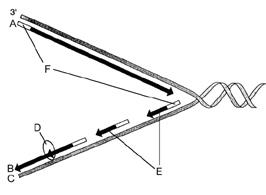
Figure 12-2 Use the figure to answer the corresponding question(s). Refer to Figure 12-2. The correct designation for the DNA strand labeled C is:
- the leading strand.
- 3¢.
- Okazaki fragments.
- a strand serving as a template.
- polymerase.
a strand serving as a template.
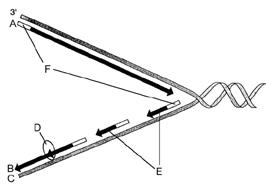
Figure 12-2 Use the figure to answer the corresponding question(s). Refer to Figure 12-2. The segments labeled F are responsible for:
- unwinding the DNA double helix.
- synthesizing the leading strand.
- initiating DNA synthesis.
- linking short DNA segments.
- forming the replication fork.
initiating DNA synthesis.
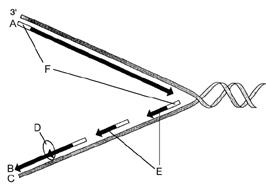
Figure 12-2 Use the figure to answer the corresponding question(s). Refer to Figure 12-2. The enzyme represented by the letter D is responsible for:
- unwinding the DNA double helix.
- forming the replication fork.
- linking short DNA segments.
- forming nucleosomes.
- synthesizing the leading strand.
linking short DNA segments.
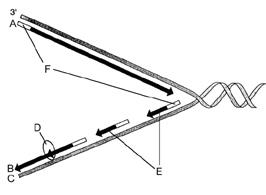
Figure 12-2 Use the figure to answer the corresponding question(s). Refer to Figure 12-2. The structures represented by the letter E are called:
- replication forks.
- nucleosomes.
- DNA polymerases.
- leading fragments
- Okazaki fragments.
Okazaki fragments.
Which of the following statements concerning nucleotide excision repair is FALSE?
- It is implicated in xeroderma pigmentosum.
- It involves a DNA polymerase.
- It involves a nuclease.
- It involves DNA ligase.
- It is a type of mismatch repair.
It is a type of mismatch repair.
__________, the ends of eukaryotic chromosomes, shorten with every cell replication event.
- Primosomes
- Centromeres
- Nucleosomes
- Kinetochores
- Telomeres
Telomeres
The ends of eukaryotic chromosomes can be lengthened by:
- primase.
- apoptosis.
- DNA polymerase.
- reverse transcriptase.
- telomerase.
telomerase
When cultured normal human cells were infected with a virus that carried the genes that coded for a subunit of telomerase:
- the cells underwent more cell divisions than normal.
- the cells underwent gene expression more vigorously.
- the cells died almost immediately.
- the cells underwent fewer cell divisions than normal.
- the cell cycle shortened.
the cells underwent more cell divisions than normal.
Cancerous cells differ from noncancerous cells in that cancerous cells:
- divide only 20 to 30 times.
- can maintain telomere length as they divide.
- have lost the ability to resist apoptosis.
- have reduced levels of telomerase.
- lack telomeres
can maintain telomere length as they divide.
Mismatch repair occurs when
- enzymes repair DNA lesions (deformed DNA) caused by ultraviolet radiation
- the two strands of DNA in a double helix are parallel instead of antiparallel
- an art student who has been placed in General Biology I for science majors is moved to a nonscience majors biology class.
- enzymes remove incorrectly-paired nucleotides.
- chromosome pairs are separated during meiosis
enzymes remove incorrectly-paired nucleotides.